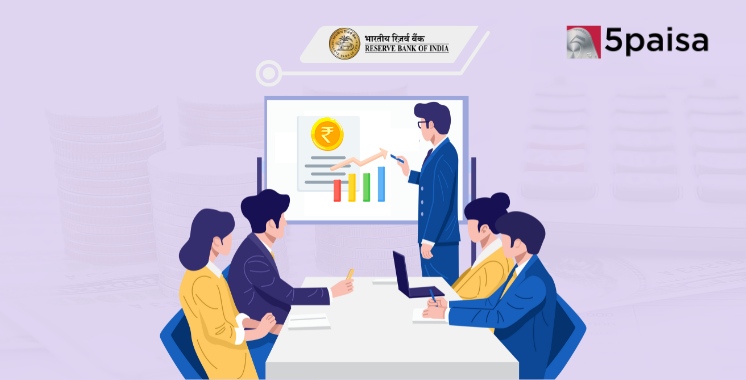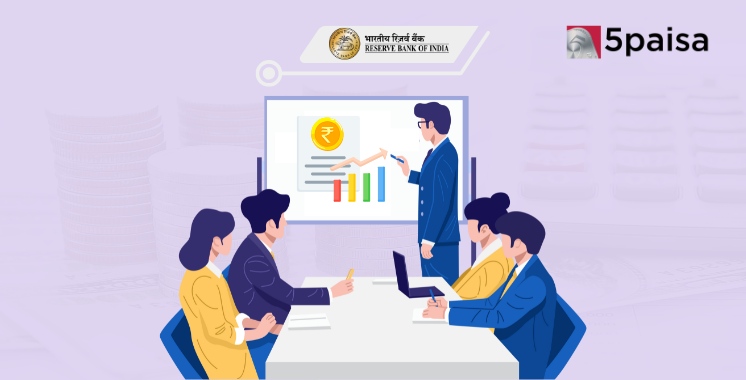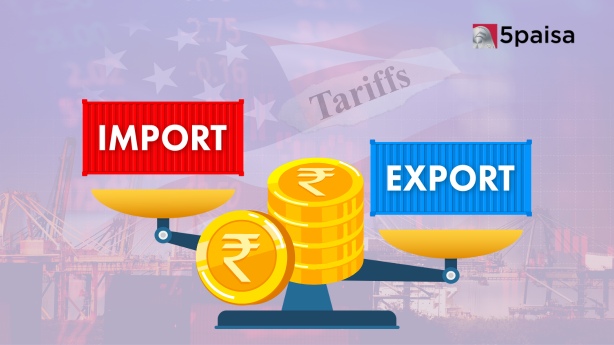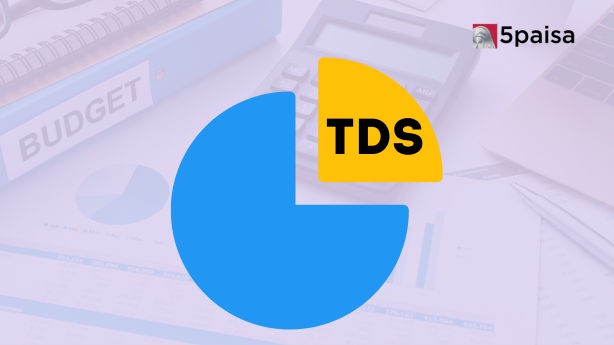2008 Stock Market Crash
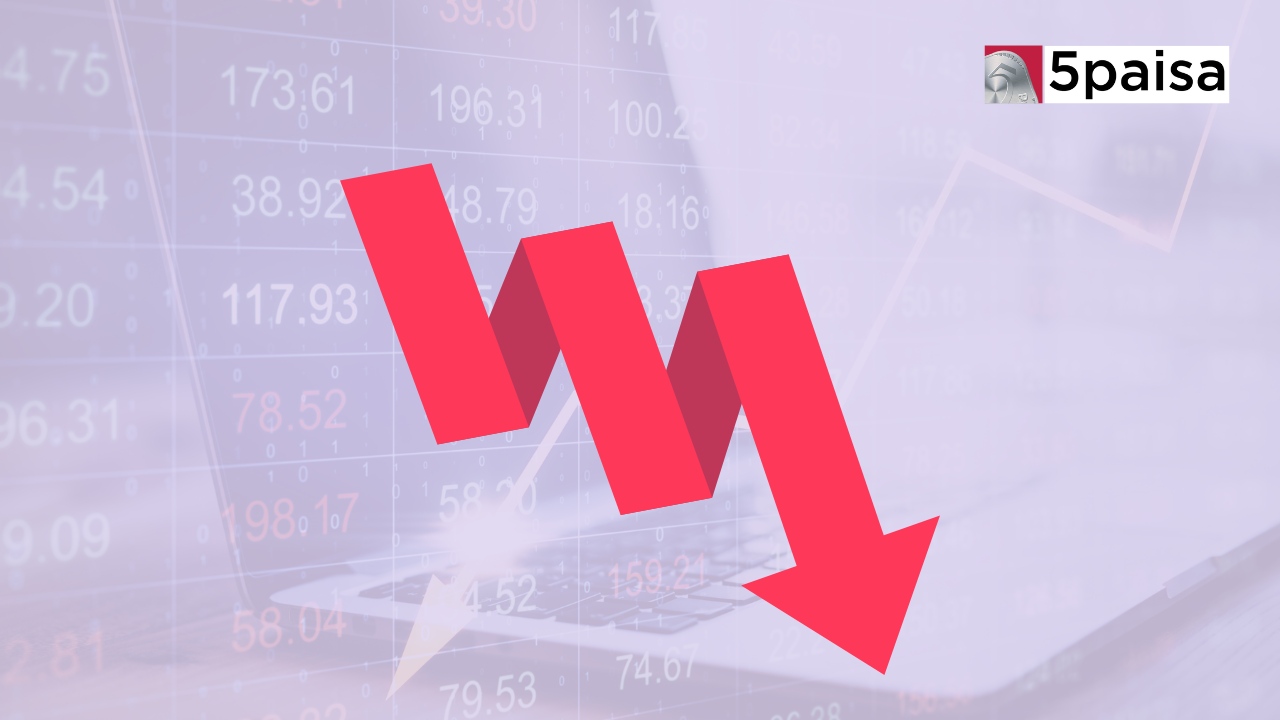
When we look back at the history of financial markets, few events loom as large as the 2008 stock market crash. This wasn't just a bad day on Wall Street or a temporary dip in stock prices. It was a full-blown financial crisis that started in the United States but quickly spread around the globe, leaving a trail of economic destruction in its wake.
Overview of the 2008 Stock Market Crash
We need to set the scene to truly grasp the magnitude of the 2008 crash. Picture the early 2000s:
● The U.S. economy was booming.
● House prices were soaring.
● It seemed like everyone was getting rich.
The stock market was hitting new highs, and a general feeling of optimism was in the air.
But beneath this rosy surface, trouble was brewing. Banks were handing out mortgages like candy on Halloween, even to people who couldn't really afford them. These risky loans, known as subprime mortgages, often had tricky terms. They might start with low monthly payments that suddenly increase after a few years.
Why were banks so eager to give out these risky loans? Well, they had found a way to package these mortgages into complex financial products called mortgage-backed securities (MBS). They then sold these to investors worldwide, spreading the risk far and wide. It seemed like a win-win situation:
● More people could buy homes.
● Banks could make more loans without keeping the risk on their books.
● Investors could earn good returns.
At the same time, the U.S. government was actively encouraging home ownership. Interest rates were kept low, making borrowing cheap and easy. It all seemed like a perfect recipe for everyone to get rich.
But as we now know, this house of cards was waiting to collapse. And in 2008, that's exactly what happened.
The Bubble Bursts
Like all bubbles, the housing bubble had to pop eventually. The first signs of trouble appeared in 2006 when house prices started to level off. By 2007, they were falling. Suddenly, all those people with tricky mortgages found themselves in a tight spot. They couldn't afford their payments when they reset to higher rates and couldn't sell their homes for more than they owed.
As more people defaulted on their mortgages, mortgage-backed securities started to lose value. Banks and investors worldwide who had bought these securities began to panic. Nobody knew who owned what or how much these securities were worth.
This uncertainty quickly spread throughout the financial system. Banks became wary of lending to each other, fearing that other banks might hold worthless mortgage-backed securities. This led to a credit freeze that threatened to halt the entire global financial system.
Key Factors Behind the 2008 Market Crash
To understand why the 2008 crash was so severe, we need to look at several key factors that came together to create the perfect storm:
The Housing Bubble
The roots of the crisis can be traced back to the U.S. housing market. In the years leading up to 2008, house prices rose unprecedentedly. This created a sense that real estate was a can't-lose investment. People were buying houses they couldn't afford, believing they could always sell them for a profit later.
Subprime Mortgages
Banks and mortgage lenders played a significant role in fueling the housing bubble. They began offering mortgages to borrowers with poor credit histories or low incomes - people who traditionally would have struggled to get a home loan. These "subprime" mortgages often came with complex terms, like low initial "teaser" rates that would reset to much higher rates after a few years.
Mortgage-Backed Securities
Banks didn't just keep these risky mortgages on their books. Instead, they bundled them together into complex financial products called mortgage-backed securities, which were then sold to investors around the world. The idea was that pooling many mortgages together would spread out and minimize risk.
Credit Default Swaps
Financial institutions started trading in credit default swaps (CDS) to further complicate matters. These were essentially insurance policies against the failure of mortgage-backed securities. However, unlike traditional insurance, you didn't need to own the underlying asset to buy a CDS. This led to a situation where the total value of CDSs far exceeded the value of the actual mortgages they were based on.
Lack of Regulation
The financial industry successfully lobbied for less regulation in the years leading up to the crisis, which meant that many of these risky practices went unchecked. For example, the Glass-Steagall Act, which had separated commercial and investment banking since the Great Depression, was repealed in 1999. Banks used depositors' money to engage in riskier investment activities.
Low Interest Rates
After the dot-com bubble burst in 2000 and the 9/11 attacks 2001, the Federal Reserve kept interest rates low to stimulate the economy. While this helped spur economic growth, it also encouraged excessive borrowing and risk-taking.
Overconfidence and Greed
There was a prevailing belief that the good times would never end. Financial institutions took on more and more risk in pursuit of higher profits. Many homeowners took out mortgages they couldn't afford, believing house prices would keep rising forever.
The Dominos Start to Fall
As the housing market began to decline, the cracks in this system started to show. The first major shock came in March 2008 when investment bank Bear Stearns, which had heavily invested in mortgage-backed securities, collapsed. JPMorgan Chase bought Bear Stearns for a fraction of its former value in a deal facilitated by the Federal Reserve.
But this was just the beginning. Throughout the summer of 2008, more and more homeowners defaulted on their mortgages. The value of mortgage-backed securities plummeted, and financial institutions worldwide found themselves holding assets worth far less than they had thought.
The situation came to a head on September 15, 2008. On this day, Lehman Brothers, one of the oldest and largest investment banks in the U.S., filed for bankruptcy. This sent shockwaves through the global financial system. The stock market fell, with the Dow Jones Industrial Average experiencing its largest one-day point drop in history on September 29, falling 777 points.
The collapse of Lehman Brothers marked the moment when the financial crisis, which had been building for months, turned into a full-blown panic. Banks stopped lending to each other almost entirely, fearing that any other institution could be the next to fail. The credit markets, which are crucial for the day-to-day functioning of the economy, essentially froze.
The Impact of the 2008 Crash on Global Financial Markets
The effects of the 2008 crash weren't confined to Wall Street or even the United States. The crisis quickly spread worldwide, affecting financial markets and economies globally. Here's how:
Stock Market Declines
Stock markets around the world plummeted. In the U.S., the S&P 500 fell 57% from its peak in October 2007 to its trough in March 2009. Similar declines were seen in major markets like the U.K.'s FTSE 100, Japan's Nikkei, and Germany's DAX.
Banking Crisis
Banks worldwide faced a severe liquidity crisis. Many had invested in U.S. mortgage-backed securities and now had assets worth far less than expected. Some banks failed, while others required government bailouts to survive.
Credit Crunch
As banks became wary of lending, credit became scarce and expensive. This affected businesses, which struggled to get the needed loans, and individuals, who found it harder to get mortgages or other types of credit.
Economic Recession
The financial crisis led to a severe economic downturn, often called the Great Recession. In the U.S., unemployment reached 10% by October 2009. Many other countries also experienced rising unemployment and declining economic output.
Currency Fluctuations
The crisis led to significant movements in currency markets. The U.S. dollar initially strengthened as investors sought safe-haven assets but later weakened as the full extent of the U.S. economic problems became clear.
Commodities Impact
Commodity prices, which had been booming, crashed as global demand fell. Oil prices, for example, fell from a high of $147 per barrel in July 2008 to just $32 in December of that year.
Global Trade Decline
As credit became scarce and demand fell, global trade volumes declined sharply. This particularly affected export-oriented economies and emerging markets.
European Debt Crisis
The 2008 crash exposed underlying weaknesses in several European economies, leading to the European debt crisis. Countries like Greece, Ireland, and Portugal required bailouts from the European Union and the International Monetary Fund.
The Government Steps In
With the prospect of a complete economic meltdown, governments and central banks worldwide took unprecedented action. In the United States:
● The Troubled Asset Relief Program (TARP): In October 2008, Congress passed a $700 billion bailout package called the Troubled Asset Relief Program. This money was used to buy troubled assets from banks and other financial institutions to stabilise the financial system.
● Federal Reserve Actions: The Federal Reserve, America's central bank, took several extraordinary measures:
○ It slashed interest rates to near zero to encourage borrowing and economic activity.
○ It started buying up troubled assets to inject money into the financial system, a process known as quantitative easing.
○ It provided emergency loans to financial institutions to prevent their collapse.
● Economic Stimulus: In February 2009, Congress passed the American Recovery and Reinvestment Act, a $787 billion economic stimulus package. This included tax cuts and increased government spending to boost economic activity.
● Auto Industry Bailout: The U.S. government also provided bailouts to General Motors and Chrysler, two of the country's largest automakers, to prevent their collapse and save millions of jobs. Other countries took similar actions, with governments stepping in to bail out banks, lower interest rates, and stimulate their economies. For example:
○ In the U.K., the government nationalized several banks, including Northern Rock and Royal Bank of Scotland.
○ The European Central Bank and Bank of England also engaged in quantitative easing.
○ China announced a massive economic stimulus package worth about $586 billion.
These interventions were controversial, with critics arguing that they rewarded reckless behaviour and would lead to moral hazard. However, most economists now believe they prevented an even worse economic catastrophe.
The Aftermath and Recovery
While these measures helped stabilize the financial system and prevent a complete economic collapse, the recovery was slow and painful for many:
● The U.S. unemployment rate peaked at 10% in October 2009 and didn't return to pre-crisis levels until 2016.
● Millions of people lost their homes to foreclosure.
● The stock market took until 2013 to recover to its pre-crisis levels.
● Many countries experienced years of slow economic growth and austerity measures.
The crisis also led to major changes in financial regulation. In the U.S., the Dodd-Frank Wall Street Reform and Consumer Protection Act was passed in 2010. This massive piece of legislation introduced new rules to prevent another similar crisis, including:
● The creation of the Consumer Financial Protection Bureau to protect consumers from predatory lending practices.
● The Volcker Rule restricts banks from making certain types of speculative investments.
● New regulations for derivatives and credit rating agencies.
● Increased capital requirements for banks.
Similar regulatory changes were implemented in other countries and at the international level.
Lessons Learned from the 2008 Economic Downturn
The 2008 crash taught us several important lessons about the functioning of our financial system and the broader economy:
The Dangers of Complex Financial Products
The mortgage-backed securities and credit default swaps at the heart of the crisis were so complicated that even the banks selling them didn't fully understand the risks. This highlighted the need for greater transparency and simpler financial products.
The Importance of Responsible Lending
The crisis showed the dangers of giving mortgages to people who couldn't afford them, leading to stricter lending standards and more protection for borrowers.
The Interconnectedness of the Global Financial System
Problems in one country can quickly spread around the world. This underscored the need for international cooperation in financial regulation.
The Need for Strong Financial Regulation
Left unchecked, the financial industry can take risks threatening the entire economy. The crisis led to a rethinking of the role of regulation in preventing financial instability.
The Limits of Self-Regulation
The idea that financial markets could police themselves was proven wrong. The crisis showed that government oversight is necessary to prevent excess risk-taking.
The Importance of Systemic Risk
The crisis revealed how the failure of one large institution could threaten the entire financial system. This led to an increased focus on identifying and managing systemic risks.
The Role of Credit Rating Agencies
These agencies gave high ratings to many very risky mortgage-backed securities, which led to reforms in how they operate and are regulated.
The Dangers of Too Much Leverage
Many financial institutions had borrowed heavily to increase their returns. When asset prices fell, this amplified their losses, leading to new rules limiting how much banks can borrow.
How the 2008 Market Crash Shaped Today's Financial Regulations
The 2008 crash led to a complete overhaul of financial regulations in many countries. In the United States, the most significant change was the Dodd-Frank Wall Street Reform and Consumer Protection Act of 2010. This massive piece of legislation introduced numerous new rules and agencies aimed at preventing another financial crisis:
The Consumer Financial Protection Bureau (CFPB)
This new agency was created to protect consumers from predatory lending practices. It can write and enforce rules for financial institutions, conduct investigations, and educate consumers about financial products.
The Financial Stability Oversight Council
This council was established to identify risks to the United States's financial stability. It can designate certain large financial institutions as "systemically important," subjecting them to stricter regulation.
The Volcker Rule
This rule, named after former Federal Reserve Chairman Paul Volcker, restricts banks from making certain kinds of speculative investments that do not benefit their customers.
Increased Capital Requirements
Banks are now required to hold more capital relative to their assets. This makes them more resilient to losses and less likely to fail during a crisis.
Stress Tests
Large banks must now undergo regular "stress tests" to ensure they have enough capital to withstand a severe economic downturn.
Regulation of Derivatives
The law introduced new regulations for the derivatives market, including requirements that many derivatives be traded on exchanges and cleared through clearinghouses.
Changes to Credit Rating Agencies
The law introduced new rules for credit rating agencies to reduce conflicts of interest and improve the quality of ratings.
Similar regulatory changes were implemented in other countries. For example:
● In the U.K., the Financial Services Authority was split into two new agencies: the Prudential Regulation Authority and the Financial Conduct Authority.
● The European Union introduced new bank regulations, including higher capital requirements and bonus limits.
● The Basel III agreements introduced new global standards for bank capital adequacy, stress testing, and market liquidity risk internationally.
These regulatory changes have made the financial system more resilient to shocks. Banks are now better capitalized and less likely to fail. Risky financial products are more closely monitored, and consumers are more protected against predatory lending practices.
However, some argue that these regulations have gone too far, making it harder for banks to lend and stifling economic growth. Others worry that as memories of the crisis fade, there may be pressure to roll back some of these protections.
The 2008 Crash and Today's Financial World
The effects of the 2008 crash are still with us today, more than a decade later:
● Low Interest Rates: Central banks worldwide cut interest rates to near zero during the crisis and kept them there for years afterwards. This has greatly affected the economy, from making it cheaper to borrow to changing how people save for retirement.
● Quantitative Easing: The Federal Reserve and other central banks have engaged in massive bond-buying programs to stimulate the economy, which has led to concerns about inflation and asset bubbles.
● Changed Banking Landscape: Many banks failed or were acquired during the crisis. Those that survived face a much stricter regulatory environment.
● Shift in Public Opinion: The crisis damaged public trust in financial institutions and increased scepticism about the benefits of free-market capitalism.
● Political Ramifications: The economic pain caused by the crisis has been cited as a factor in political developments like the rise of populist movements in many countries.
● New Financial Technologies: The crisis spurred the development of new financial technologies, from peer-to-peer lending platforms to cryptocurrencies.
While the financial system is generally considered more stable now than before the crisis, new risks have emerged. The COVID-19 pandemic in 2020 showed that unexpected events can still shake the global economy, reminding us of the importance of financial stability and preparedness.
As we move forward, the challenge will be to maintain a financial system that is both stable and dynamic, one that can fuel economic growth while protecting against the kind of systemic risks that led to the 2008 crash.
Conclusion
The 2008 market crash was a watershed moment in financial history. It exposed deep flaws in our financial system and led to sweeping changes in regulating and thinking about finance. The lessons learned from this crisis have made our financial system more resilient, but new challenges continue to emerge.
As we've seen with events like the COVID-19 pandemic, the global economy remains vulnerable to unexpected shocks. However, the reforms implemented after 2008 have given us better tools to respond to these challenges. By learning from past crises, adapting to new risks, and balancing the need for innovation with the imperative of stability, we can work towards a more robust and equitable financial system for the future.
The 2008 crash is a powerful reminder of the importance of vigilance, responsible practices, and strong oversight in our financial markets. We must remember this lesson as we navigate the complex and ever-changing landscape of global finance.
- Flat ₹20 Brokerage
- Next-gen Trading
- Advance Charting
- Actionable Ideas
Trending on 5paisa
Business and Economy Related Articles
Disclaimer: Investment in securities market are subject to market risks, read all the related documents carefully before investing. For detailed disclaimer please Click here.

 5paisa Research Team
5paisa Research Team
 5paisa Research Team
5paisa Research Team
